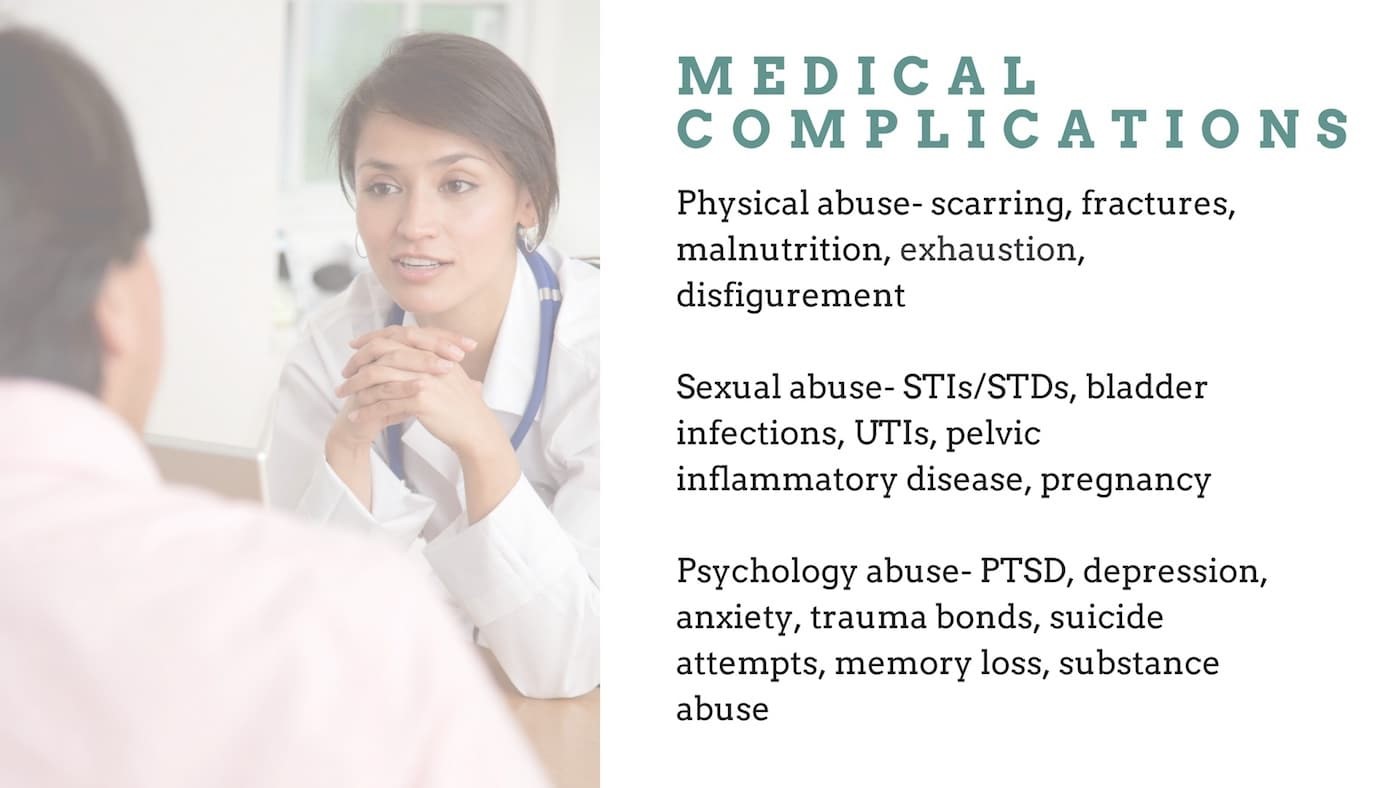We have more slaves in the world today than ever before in history.
Why Human Trafficking is Thriving in the 21st Century
Criminals become billionaires by exploiting and profiting from human life


Sexual Exploitation
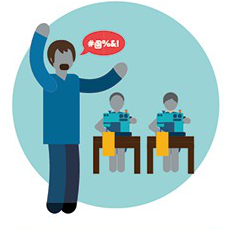
Forced Labour
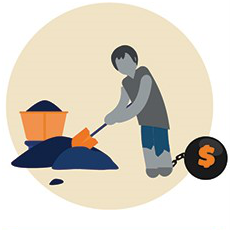
Debt Bondage
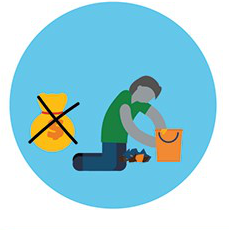
Domestic Servitude
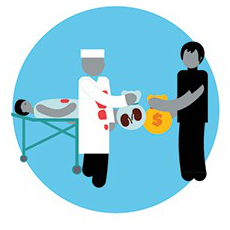
Organ Removal

Forced Begging
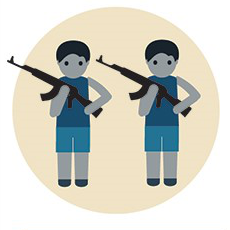
Child Soldiers
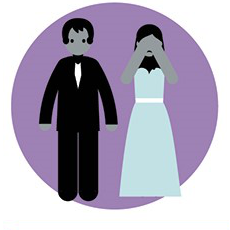
Forced Marriage
Human trafficking – It is the “recruitment, transportation, transfer, harbouring or receipt of a person, by means of the threat of use of force or other forms of coercion, of abduction, of fraud, of deception, of the abuse of power or of a position of vulnerability or of the giving or receiving of payments or benefits to achieve the consent of a person having control over another person, for the purpose of exploitation.” Exploitation includes sexual exploitation, forced labour or services, involuntary & domestic servitude, Child exploitation -child labour, child porn, child sexual exploitation, child marriage, or the removal of organs.
Labour trafficking happens most often within the domain of domestic work, agriculture, construction, manufacturing and entertainment, and migrant workers and indigenous people are especially at risk of becoming victims.
Human trafficking can occur within a country or trans-nationally. Human trafficking is a crime against the person grave violation of the victim’s human right
Human trafficking is one of the most horrendous crimes that can be committed especially when it involves children.
Boys and men are just as likely to be victims of human trafficking as girls and women. However, they are less likely to be identified and reported. Girls and boys are often subject to different types of trafficking, for instance, girls may be trafficked for forced marriage and sexual exploitation, while boys may be trafficked for forced labour or recruitment into armed groups or sexually exploitation.
You can help overcome slavery by ensuring you only purchase products that come from reputable businesses, where exploitation of people is not taking place.
Child Exploitation & Trafficking
Child Trafficking is happening around the world and in our own communities. Every Community must work together to end this atrocity to save our children.
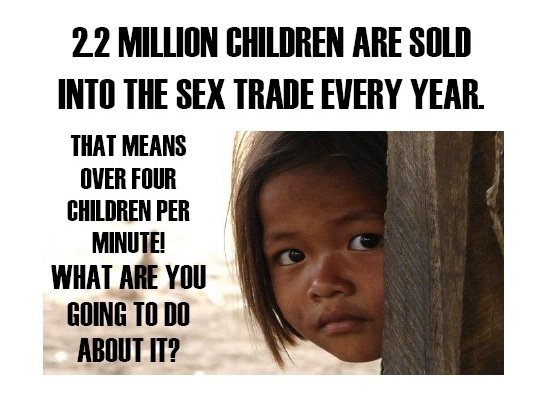
Each year, more than two million children around the world fall victim to commercial sexual and labour exploitation. Put simply, the growing epidemic of child exploitation demands a coordinated response.
Child trafficking is the abuse of children for profit. It includes the recruitment, transportation, transfer, harbouring, or receipt of persons who are under the age of 18 years for the purpose of exploitation. Many cases of child trafficking have involved the following.
Commercial Sexual Exploitation of Children (CSEC) is believed to be the most prevalent form of child trafficking. Some young victims are marketed for sex on street corners or in clubs; others are advertised online. Still others are exploited for profit within their own homes. Traffickers prey on children as young as 9 years of age.
Traffickers in children may take advantage of the parents’ extreme poverty. Parents may sell children to traffickers to pay off debts or gain income, or they may be deceived concerning the prospects of training and a better life for their children. They may sell their children into labour, sex trafficking, or illegal adoptions. The adoption process, legal and illegal, when abused can sometimes result in cases of trafficking of babies and pregnant women around the world.
Commercial sexual exploitation can take many forms, including forcing a child into prostitution or other forms of sexual activity or child pornography.
Child exploitation may also involve forced labour or services, slavery, or practices similar to slavery, servitude, the removal of organs, illicit international adoption and trafficking for early marriage.
How do Traffickers Target Children?
Young children and teens are targeted in their neighbourhoods, at school, at the mall and other popular teen hangouts, and on college campuses.
Social media and the Internet are common tools used to recruit children and teens and turn them into sex trafficking victims.
While runaways and homeless teens are frequent targets, children in all types of family situations are vulnerable to the manipulations of traffickers.
When targeting homeless or runaway teens, traffickers can make promises of food and shelter. The child can be manipulated into “survival sex,” turning to prostitution to get food and shelter.
Vulnerable children and teens with changing family situations or troubled relationships with parents may also be targeted by a sex trafficker who plays the role of father or lover. Care is offered, flattery and attention are directed at the child or teen, and the target may be given gifts or made to feel valued and appreciated. Eventually, the trafficker begins to make suggestions of prostitution and the trusting child or teen agrees in order to keep the trafficker’s love and attention. The specific processes used can vary depending upon the age of the child, the child’s family situation, and several other factors.
In other cases, the trafficker refrains from making any type of sexual advances as he works to earn the trust of the child. Without making advances, the trafficker is able to gain the child or teen’s trust without drawing the attention of adults. The child is slowly manipulated and is made to trust the trafficker and feel fear or distrust of others. The child or teen will listen to the trafficker and can end up leaving his or her family and becoming a trafficking victim.
Drugs are a common tool used by human traffickers as well. The trafficker will get the child or teen hooked on drugs, and the addiction will be used as leverage to force the young person into prostitution.
Forced Marriages as a form of Child Trafficking
Child, early or forced marriage or unions are a violation of children’s human rights. Despite being prohibited by international law, it continues to rob millions of girls under 18 around the world of their childhood.
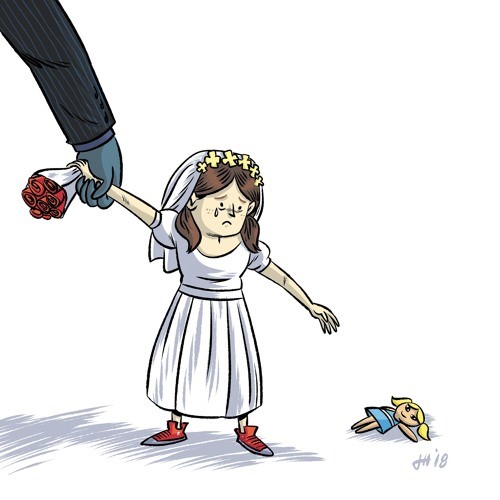
Early marriage is a harmful practice that denies girls their right to make vital decisions about their sexual health and well-being. It forces them out of education and into a life of poor prospects, with an increased risk of violence, abuse, ill health or early death.
Every year, an estimated 14 million girls worldwide under 18 are married without their consent. This practice – child / forced marriage – increases a girl’s vulnerability to health risks, domestic violence, and poverty. It also severely limits her access to education and economic opportunities.
Child trafficking and child marriages have been condemned globally as practices which are harmful to girls’ health, and which violate their rights. The significance of child trafficking and child marriages for a range of development outcomes explains why both are prohibited by law and given recognition as major policy issues in many countries. Despite international conventions and corresponding regional conventions and national legislations and the efforts of numerous non-governmental, faith-based, and international organisations, many girls (especially in developing countries) are still trafficked and/or subjected to forced and early marriages and the measurement of this practice remains relatively unsophisticated. This paper demonstrates that some child marriages have slave-like characteristics similar to those of child trafficking and can thus be argued to be a form of child trafficking. This is because children in forced marriages coerced into these unions and are made to engage in acts similar to victims of sex and labour trafficking.
A forced marriage can be the means that starts other forms of enslavement such as domestic servitude or sex trafficking.
All around the world people are forced to marry, either by their families or the suitor.
WHY CHILD MARRIAGE HAPPENS
Inequalities between boys and girls driven by harmful social and gender norms
Laws protecting girls aren’t enforced
Parents think marriage will protect girls from violence, particularly in times of crisis or insecurity
Younger wives are considered to be more obedient
Poverty – plus there is a higher dowry for older girls or women
WHERE DOES IT HAPPEN?
Child, early and forced marriages or unions are a global problem across many different countries, cultures, religions, and ethnicities. Early marriage and forced marriage are highest in Sub-Saharan Africa where 38% of girls become child brides.
WHAT ARE THE CONSEQUENCES OF CHILD MARRIAGE?
Child marriage is a fundamental violation of human rights.
Girls who are married are unlikely to attend school. Education gives girls choices and opportunities in life to become leaders in society. Education also enables girls to make informed decisions about their well-being and future
They are more likely to experience violence and abuse
It disrupts girls’ rights to health and education, leading to early pregnancy and social isolation.
Child brides are neither physically nor emotionally ready to become wives and mothers.
They face higher risks of experiencing dangerous complications in pregnancy and childbirth, contracting sexually transmitted diseases including HIV, and suffering domestic violence.
Girls, women, and their families can be trapped in a cycle of poverty.
EDUCATION IS ONE OF THE MOST POWERFUL TOOLS TO HELP GIRLS AVOID CHILD MARRIAGE.
With limited access to education and economic opportunities, girls’ income-earning potential is reduced, affecting their socio-economic status for generations to come. This has a wider impact on society, and the economy.
The education a girl receives is the strongest indicator of the age she will marry. Evidence shows that girls who attend secondary school are three times less likely to be child brides. Educating girls provides them with the skills, knowledge, and confidence to make informed decisions about if, when and who they marry.
A lost opportunity for education is not only harmful for girls but has far-reaching consequences for their children and wider communities. The economic impact of child marriage was shown recently in a report by the World Bank: in countries where child marriage rates are high, girls’ educational attainment is low, which in turn leads to reduced lifetime earnings and lower GDP. When girls have access to safe, quality education, the benefits are widely felt.
Child Exploitation and Grooming
Defining child sexual exploitation
Child sexual exploitation is a form of sexual abuse where offenders use their power, (physical, financial, or emotional) over a child or young person, or a false identity, to sexually or emotionally abuse them. Sexual exploitation is a real threat for children and young people of all ages and backgrounds. It often involves situations and relationships where young people receive something (food, accommodation, drugs, alcohol, cigarettes, affection, gifts, money etc.) in return for participating in sexual activities. Child sexual exploitation can occur in person or online, and sometimes the child or young person may not even realise they are a victim.
Identifying the signs
Child sexual exploitation can be hard to identify, however there are warning signs. As professionals who work with children, you are often best placed to identify signs and behaviours that may indicate that a child or young person has been subject to abuse, or that a school community member may be a perpetrator of abuse. It is therefore critical that you are able to recognise the signs of sexual exploitation, as you may be the only adult in a position to identify and respond to suspected abuse. In many cases the signs that an adult is sexually abusing (or grooming a child with the intent of sexually abusing them) may not be obvious.
How sexual exploitation happens
Child sexual exploitation can take many forms but some of the common situations in which it can occur include:
Inappropriate relationship
This usually involves an individual who exercises inappropriate power or control over a young person. There may be a significant age gap. The victim may believe they are in a loving relationship or friendship initially but the relationship then changes and the offender uses their power over the young person to coerce, intimidate and continue the abuse.
Partnership
Another young person befriends and grooms the victim into a sexual relationship by presenting as an ideal partner. They then force or coerce the victim into having sex with them, friends or associates, for social status, financial or other gain.
Organised exploitation and trafficking
Organised sexual exploitation is the most sophisticated form of sexual exploitation. There are often links between abusers and victims are moved between networks (internal trafficking). Young people (often connected) are passed through networks, possibly over geographical distances, between towns and cities where they may be forced into sexual activity.
Forced marriage
Forced marriage, where a child or young person is subject to a marriage without their consent, and which is usually arranged for by their immediate or extended family, is also a form of sexual exploitation and constitutes a criminal offence.
Grooming
Grooming is when a person engages in predatory conduct to prepare a child or young person for sexual activity at a later time. Grooming can include communicating and/or attempting to befriend or establish a relationship or other emotional connection with the child or their parent/carer. Young people are often ‘groomed’ before they are sexually abused. At first they may be tricked into thinking they are in a safe and normal relationship so they may not know it’s happening or may feel they have no choice but to be abused. It may be hard to identify when someone is being groomed until after they have been sexually abused, because grooming behaviour can sometimes look like ‘normal’ caring behaviour, however this is not always the case.
Examples of grooming behaviour may include:
- giving gifts or special attention to a child or young person, or their parent or carer, making the child or young person feel special and/or indebted to an adult
- making close physical contact sexual, such as inappropriate tickling and wrestling/play fighting
- openly or pretending to accidentally expose the victim to nudity, sexual material and sexual acts (this in itself is classified as child sexual abuse but can also be a precursor to physical sexual assault)
- controlling a child or young person through threats, force or use of authority making the child or young person fearful to report unwanted behaviour.
Groomers may rely on mobile phones, social media and the internet to interact with children in inappropriate ways and will often ask the child to keep their relationship a secret. The grooming process may continue for months before the offender arranges a physical meeting.
How grooming happens
There are many ways in which grooming can occur and it may even be parents, carers or other adults who supervise young people, who are targeted by this behaviour. While the below information describes some of the ways in which grooming can happen, grooming will not always look like this. Offenders are deceptive and manipulative in the way they work, so it is important to draw on a range of information, such as the warning signs of sexual exploitation, if you have concerns.
Targeting
The groomer could be a male or female and may look for a young person or a group of young people in places such as schools, other places young people frequent or by creating false profiles on the internet. They may show an interest in the child and perhaps offer the child or young person something, for example, a cigarette, food and drink or someone to talk to for support.
Relationship building
The groomer may want to keep contact with their target and even isolate them from their supportive networks. They may give them a mobile phone; make them feel special by complimenting them or do favours for them such as giving them lifts and planning fun activities. This may lead to the child spending less time with their friends and family.
Fake loving relationship or friendship
Victims may enter a fake loving relationship or friendship with the groomer. Within the fake friendship, children and young people may be introduced to sex through, for example, porn or watching sexual acts. The victim may think everything is fine and that they are in control, but the groomer is slowly gaining more control.
Control and reinforcement
The groomer may attempt to consolidate and entrap the victim by getting them to do things that can be dangerous and/or against the law like drinking, taking/selling drugs or criminal activity. This may lead to the child or young person being forced to do sexual favours in return for not being hurt or exposed. This may include violence or threats of violence.
Victimisation
The child or young person may be forced into having sex with others for something they need or want, by either force or persuasion. Groomers can persuade their victims to undertake sexual activities like being filmed performing sexual acts, by using emotional blackmail, and by making it sound normal.
Identify the signs
Victims of abuse are unlikely to tell anyone that they are being abused. They may think they are in a loving relationship or friendship, or that they have no choice. That is why it’s vital to be able to spot the signs of child sexual exploitation.
There may be many reasons for changes in the behaviour of a child or young person, but if you notice a combination of worrying signs, it is time to seek help or advice. If a child or young person is a victim of grooming, blackmail, or sexual abuse, they may show some or all of the following signs:
- regular absences from school, missing training, work or other activities
- going missing for long periods or appearing at school extremely fatigued
- being dishonest about where they’ve been and whom they’ve been with
- developing an unusually close connection with an older person
- displaying mood changes (hyperactive, secretive, hostile, aggressive, impatient, resentful, anxious, withdrawn, depressed)
- using street/different language or copying the way a new friend may speak
- talking about new friends who don’t belong to their normal social circle
- presenting at school with gifts or money given by new friends
- having large amounts of money, which they cannot account for
- using a new mobile phone (possibly given to them by a new friend), excessively making calls, videos or sending text messages
- being very secretive about their phone, internet and social media use, using drugs (physical evidence includes spoons, aluminium foil, ‘tabs’, ‘rocks’ or pieces of ripped cardboard)
- assuming a new name, being in possession of false identification, a stolen passport or driver’s licence
- being picked up by an older or new friend from school, or down the street
- threats to humiliate or share sexual images of victims if they don’t carry out sexual acts.
Grooming’ is now a criminal offence. This offence targets predatory conduct undertaken by an adult to prepare a child, under the age of 16, to engage in a sexual activity at a later time.
Most at risk
Sexual exploitation happens to children of any age, background, socio-economic status, gender, sexual orientation, and vulnerability. Offenders can be from an ethnic background; they can be women, men, or other young people. While any child can be victim to sexual abuse, children who are vulnerable, isolated and/or have a disability are much more likely to be victimised and are a significantly overrepresented group.
A student may be vulnerable to sexual exploitation if you notice, or they report any of the following in their relationship/s:
- threats to end their relationship if they don’t have sex
- demands that they have sex with other people
- expectations to provide sex in return for food, a place to stay, or drugs or gifts
- threats to cease the relationship if sexual ‘dares’ are not carried out
- receiving money in return for sexual acts
- requests to provide sexual photos or sharing sexual photos online or via text
- threats to humiliate or share sexual images of victims if they don’t carry out sexual acts.
Identify perpetrators of child sexual exploitation
You can play a critical role in identifying signs that a member of the school community maybe engaging in child sexual exploitation or grooming a child or young person for the purpose of engaging in sexual activity.
Most critically you must report suspected abuse if you:
- feel uncomfortable about the way an adult interacts with a child/children
- suspect that the adult may be engaging in sexual abuse of a child/children
- suspect that the adult is grooming the child/children for the purpose of engaging in sexual activity
- reasonably believe that the adult is at risk of engaging in sexual behaviour with a child/children.
In many cases the signs that an adult is sexually abusing (or grooming a child with the intent of sexually abusing them) may not be obvious.
Report child sexual exploitation and grooming
If indicators lead you to form a reasonable belief that a child or young person is being sexually exploited, you must follow the Four Critical Actions for schools.
Talk to children about sexual exploitation
Sexual exploitation can be difficult to speak about with students. They may be very reluctant to share information and disclose details about the abuse. When listening to the child or young person make a disclosure about potential abuse, including sexual exploitation, it is important to avoid asking leading or intrusive questions.
Your role is simply to receive the information in an unbiased way and to reassure the child or young person that they no longer have to deal with the abuse alone. It is the role of Victoria Police and other relevant authorities to investigate the concerns and identify the details of what exactly happened.
What is online ‘grooming’?
Young people are quick to embrace and explore the online world, but parents should be aware of the risks
Online grooming occurs when an adult uses electronic communication (including social media) in a predatory fashion to try to lower a child’s inhibitions, or heighten their curiosity about sex, with the aim of eventually meeting them in person for the purposes of sexual activity. This can include online chats, sexting, and other interactions.
The process may start with sending pornographic images to ‘normalise’ the discussion of sexual activities, and then move to requests for naked images or to perform a sex act on a webcam.
Any site, game, app or platform that allows one person to communicate with another can be used for grooming. Those that are particularly popular with young people will also be popular with online predators
Who is at risk?
All young people who use technology are at risk, some of course more than others. Online predators are very clever and will focus on those who are happy to respond when contacted. Social networking sites and gaming platforms are designed for communication, and many allow the sharing of personal information, providing an easy way for online offenders to find their next victim. Young people are naturally curious and trusting and will engage in online discussions about things that they would not openly discuss in the physical world. Children may make poor decisions about allowing people into their online lives, believing that those who seem ‘nice’ online will be the same in person. Many will refer to a random online acquaintance as an “‘online friend”‘, dropping their guard and allowing the grooming process to take place.
What to do
It is very important to talk to your child about these issues, so that are aware of things they may confront in the digital space. Do not avoid talking about predators for fear of upsetting them, as the potential harms can have far greater consequences. Let them know:
- they can tell you about any problems they are having or if someone makes them feel uncomfortable online
- they should only engage online with people they personally know and trust in real life to reduce risk
- it is okay to trust their instincts: if something feels odd or strange then it probably is
- ‘Good friends’ don’t make them do things that make them feel uncomfortable.
Warning signs
Signs of grooming might include the following:
- You find nude images or pornography on your child’s computer. Online predators may send pornographic images first to ‘normalise’ their requests for pictures.
- You see sexualised search results as your child ‘googles’ what they have been asked.
- Your child engages online with people they don’t know personally.
- Your child uses sexualised language.
- Your child spends an increasing and / or an excessive amount of time online.
- Your child receives unexplained gifts
- Your child is displays mood changes (hyperactive, secretive, hostile, aggressive, impatient, resentful, anxious, withdrawn, depressed).
- Your child is excessively secretive about their use of communications technology, including social media.
- There are people on your child’s “‘friends’ list” that you do not know, and your child has never met offline.
Sexting
For people under 18, non-consensual sexting is illegal, and penalties can be very serious.
What is ‘sexting’?
‘Sexting’, known amongst young people as sharing a nude or a naked selfie, is the sharing of a sexually explicit picture or video via mobile phones, instant messaging apps, and/or social media sites. With modern technology this can be done instantly, but it can have serious and lasting consequences
What are the possible social consequences of ‘sexting’?
Once digital images are sent, they are no longer private, and you have lost control of them. You can’t get them back. They can resurface again when least expected. They can be published and found by anyone, including friends, family members, complete strangers, and sexual predators. Images can be used to exploit, bully and harass individuals and they can also be used as a form of black mail known as ‘sextortion.’
What are the possible legal consequences of ‘sexting’?
A naked or sexually explicit picture or video of a person under the age of 18 years is by legal definition child exploitation material and the making, transmission and possession of such images can result in serious criminal charges.
To ensure that young people under the age of 18 years who engage in consensual ‘sexting’ are not treated at law the same way as a child sex offender, there have been amendments to the law in Victoria to protect young people from criminal charges in certain circumstances. These are:
- There is no threat, fear, coercion, threat to share or sharing of the image.
- Not more than two years age difference between the teens.
- No adult involved.
- No other criminal act is depicted in the image.
If these four things are present, it means that police can use an educative response rather than the criminal justice system.
Once a person turns 18, the exceptions listed above no longer apply, even if the person obtained the image when they were under 18 years of age. Penalties for the making, possessing and/or transmission of child exploitation material are very serious and can result in imprisonment and registration on the sex offender’s register.
There are also two other offences related to this behaviour: Distribute an Intimate Image and Threaten to Distribute an Intimate Image. These offences are applicable to everyone, not just young people. This is where an intimate image is shared or threatened to be shared without the consent of the person depicted in the image.
What are the reasons for ‘sexting’?
Young people are naturally curious and interested in exploring sexuality. They are also exposed to a wide range of sexual imagery in songs, video clips, movies, advertising and online. This can normalise the behaviour and promote the idea that sexual behaviour has no repercussions, and many young people see it as a normal part of the flirting and dating process. We are now seeing this behaviour occur in primary schools. Unfortunately, the reality is more complicated and young people often only become aware of this after the event.
In Australia we know that 1 in 3 young people aged 14 – 17 years have had some experience with sexting. Teens were also three times more likely to be asked for a nude than to actually send one. Over half of all these requests to send a nude came from someone the child/teen did not know in real life.
Talk with your child
Regularly talk with your children about their experiences. Ask them what they have seen or done, and if they have had any problems. Reinforce that nothing is so bad that they can’t talk to you about it. Ensure them they know they can tell you when they have any problems, if they see something that they know is wrong, or anything that upsets them. Let them know they can tell you about a friend’s behaviour. Children often fear telling a parent an issue as they think this will result in their technology being confiscated. Don’t threaten to disconnect your child—this will only lead them to hide problems from you.
What do I do if I find explicit images of my child?
Take a deep breath and try to remain calm.
Find a quiet place and talk to them about your concerns and allow them time to respond.
Ascertain what has happened and who else may be involved. Who were the images sent to?
Where are the images now? Who may have them? Were they pressured to send the pics?
If posted to a social media site, report the images to the site for removal.
Make an appointment to speak to someone at your child’s school such as a counsellor, teacher, or principal, and let them know what has occurred.
Be aware that in some instances, police may need to be involved and schools have certain obligations in relation to the reporting of incidents. Please don’t withhold information from the school because you are concerned about police involvement. Police are very well placed to deal with these issues and have tools to minimise the impact.
If you believe that the ‘sexting’ is a result of your child being the victim of an online sexual predator rather than adolescent naivety, notify the police immediately.
Understanding your obligations to protect children
As members of a community, we all have a moral obligation to protect any child under our care and supervision from reasonably foreseeable harm.
As a school staff member, you play a critical role in protecting children and must meet a range of legal obligations to identify, respond and report child abuse.
The easiest way to comply with your legal and moral obligations is to remember that you must report any reasonable suspicion that a child has been abused, or is at risk of being abused, by following the Four Critical Actions.
This includes abuse that has, or is suspected to have, taken place within or outside of school grounds and hours.
Keeping children safe from sexual exploitation strategy
Keeping Children Safe from Sexual Exploitation Strategy aims to prevent and protect children from sexual exploitation and prosecute perpetrators who prey on vulnerable children.
Understanding your obligations to protect children
As members of a community, we all have a moral obligation to protect any child under our care and supervision from reasonably foreseeable harm.
As a school staff member, you play a critical role in protecting children and must meet a range of legal obligations to identify, respond and report child abuse.
The easiest way to comply with your legal and moral obligations is to remember that you must report any reasonable suspicion that a child has been abused, or is at risk of being abused, by following the Four Critical Actions.
This includes abuse that has, or is suspected to have, taken place within or outside of school grounds and hours.
Child Labour Exploitation
Child labour remains endemic. To eliminate it, we need economic and social reforms, effective partnerships, and much more. Children don’t have a choice about child labour. Their circumstances choose for them, a decision dependent on factors like income, uncertainty, and relative returns to work and education.
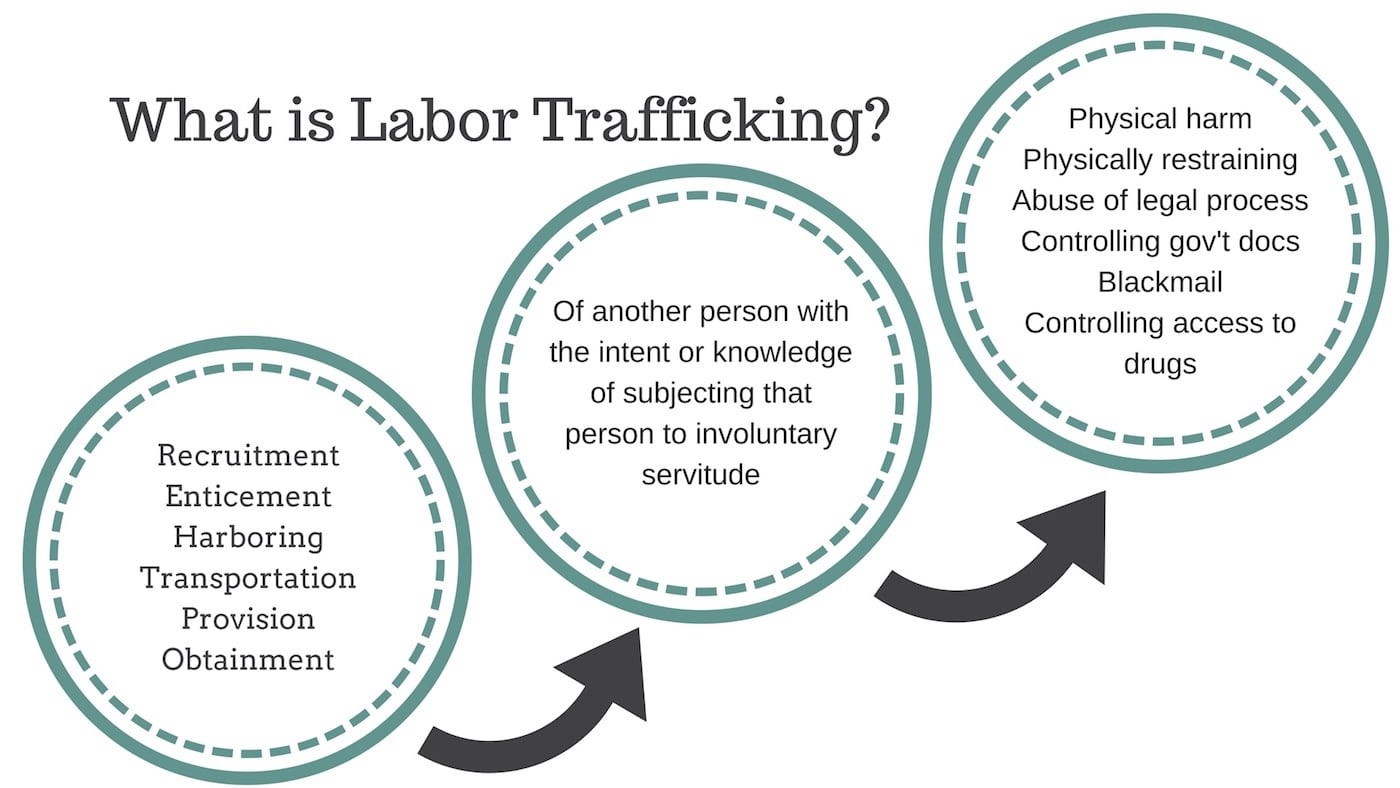
What are the Causes of child labour?
Even well-intended customs and traditions can be harmful, such as:
- The view that work is good for children because it helps them build character and develop skills
- The tradition that children should follow their parents’ footsteps and learn their trade at an early age
- The importance of traditions that push poor families into debt, such as social occasions or religious events, which are paid off through child labour
Schooling is another important factor. Many communities do not have enough schools, or do not view education as a good alternative to work. Sometimes, children seek work themselves because their families are financially strained. Economic hardship can lead to family dysfunction and, ultimately, child labour. Ending child labour is a complex process, but it is within reach. The key components are strictly enforced legislation, followed by incremental societal change.
International concern is growing, driven by:
- Globalized markets
- Economic transparency
- Consumer awareness
Globally, 160 million children aged 5 to 17 are in child labour. About half of them (72.5 million) perform hazardous work that places their health, safety, or moral development at risk.
- One in five children in Africa is involved in child labour, making it the region where the risk of child labour is greatest
- Half of affected children live in lower-middle and upper-middle income countries
- The problem is more prevalent in countries experiencing conflict
Some children in child labour work long hours. Estimates for boys involved in child labour are higher than those for girls, but those estimates don’t include household chores.
- 70% of children in child labour work in agriculture, mainly in subsistence and commercial farming and herding livestock
- A third of children in child labour are completely outside the education system, and those that do attend perform poorly

HOW CAN WE END CHILD LABOUR?
With the right policy approaches and practical responses, the end is in sight. Here’s what we need to do:
- Advance the legal commitment to ending child labour
- Promote decent work for adults and young people of legal working age
- Build and extend social protection systems, including floors, to help poor families
- Expand access to free, quality public education as the logical alternative to child labour
- Address child labour in supply chains
- Protect children in situations of fragility and crisis
The ILO and UNICEF have joined forces to produce the latest report on the global estimates and trends around child labour. It warns that an additional 9 million children are at risk as a result of the COVID-19 pandemic.
For the first time in 20 years, child labour may be on the rise. What is certain is that the COVID-19 pandemic is reversing years of progress. The pandemic is likely to make the global target to end child labour harder to achieve.
Child Soldiers
Thousands of children are serving as soldiers in armed conflicts around the world.
Many are abducted or recruited by means of force, while others may join out of desperation believing that armed groups offer their best chance of survival.
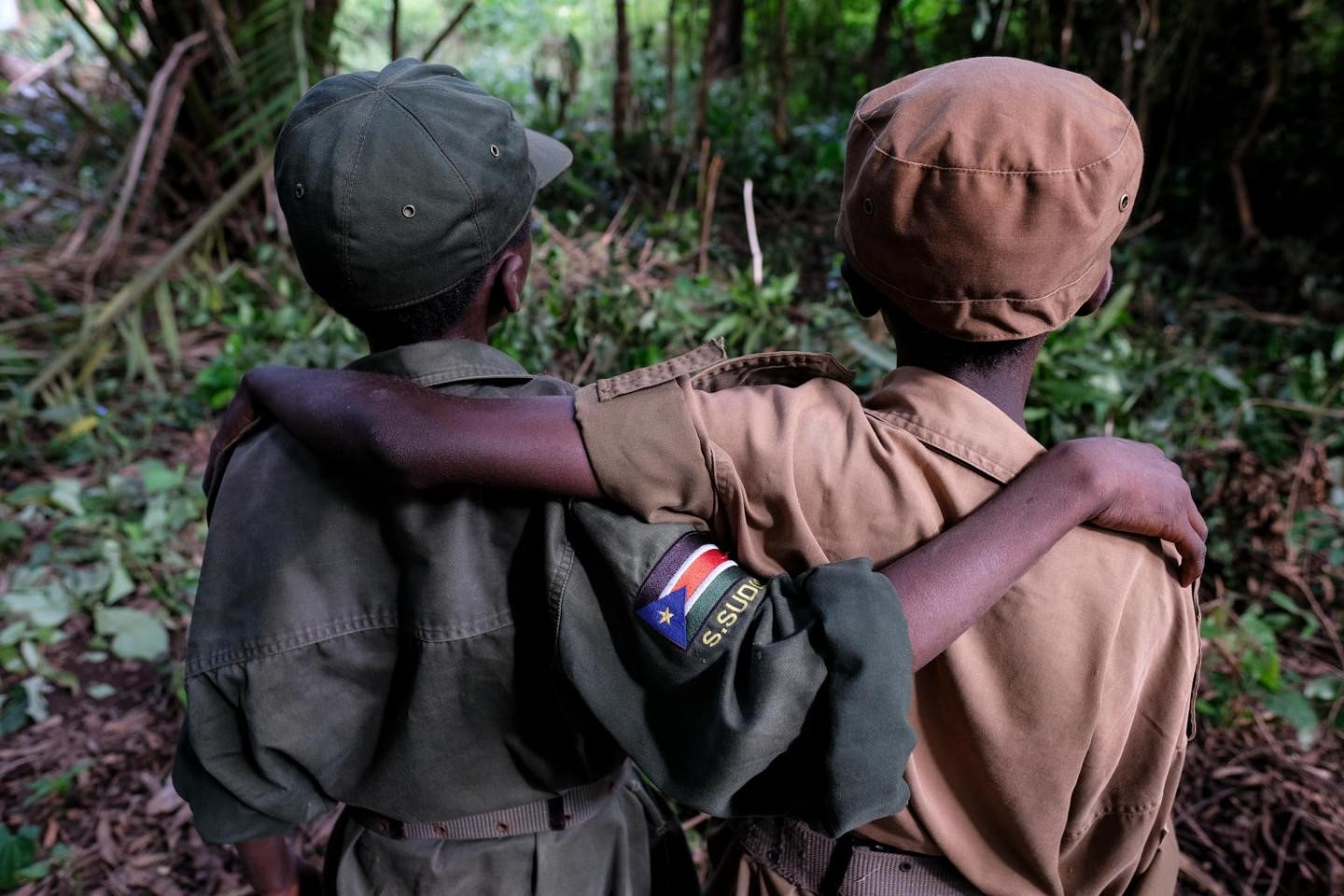
Children, both male and female as young as eight-year-old serve in armed opposition groups. They may fight on the front lines, participate in suicide mission, act as spies, messengers, or lookouts and even sex slaves.
In many conflicts children take direct part in combat. However, their role is not limited to fighting. Many girls and boys are also used in support functions that also entail great risk and hardship.
Moreover, the use of children for acts of terror, including as suicide bombers, has emerged as a phenomenon of modern warfare. Each year, the UN receives reports of children as young as 8 or 9 years old associated with armed groups.
Girls are also recruited and used by armed forces and groups. They have vulnerabilities unique to their gender and place in society and suffer specific consequences including, but not limited to, rape and sexual violence, pregnancy and pregnancy-related complications, stigma and rejection by families and communities.
Regardless of how children are recruited and of their roles, child soldiers are victims, whose participation in conflict bears serious implications for their physical and emotional well-being. They are commonly subject to abuse and most of them witness death, killing, and sexual violence. Many are forced to commit violent acts, and some suffer serious long-term psychological consequences. Some suffer serious injuries and end up living with disabilities for the rest of their lives. The reintegration of these children into civilian life is an essential part of the work to help child soldiers rebuild their lives.
Organ Harvesting
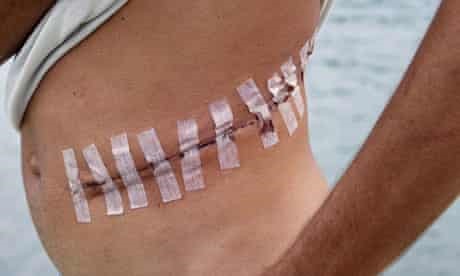
An atrocity going on today, which is relatively little known of or believed as actually happening.
It is imperative that the realities of this become widely known, and that effective international action be taken urgently in response
In some cases, the victim is compelled into giving up an organ. In other cases, the victim agrees to sell an organ in exchange of money/goods but is not paid (or paid less). Finally, the victim may have the organ removed without the victim’s knowledge (usually when the victim is treated for another medical problem/illness – real or orchestrated problem/illness). Migrant workers, homeless persons, and illiterate persons are particularly vulnerable to this form of exploitation. Trafficking of organs is an organized crime, involving several offenders: the recruiter, the transporter, the medical staff, the middlemen/contractors & the buyers.

Commercial Sexual Exploitation
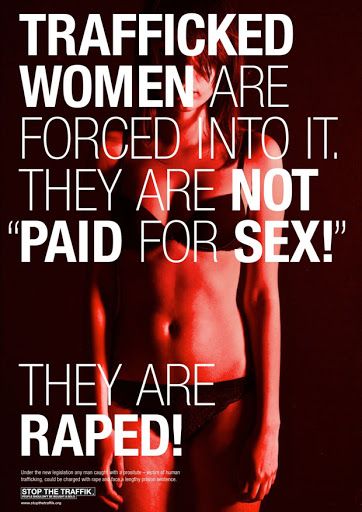
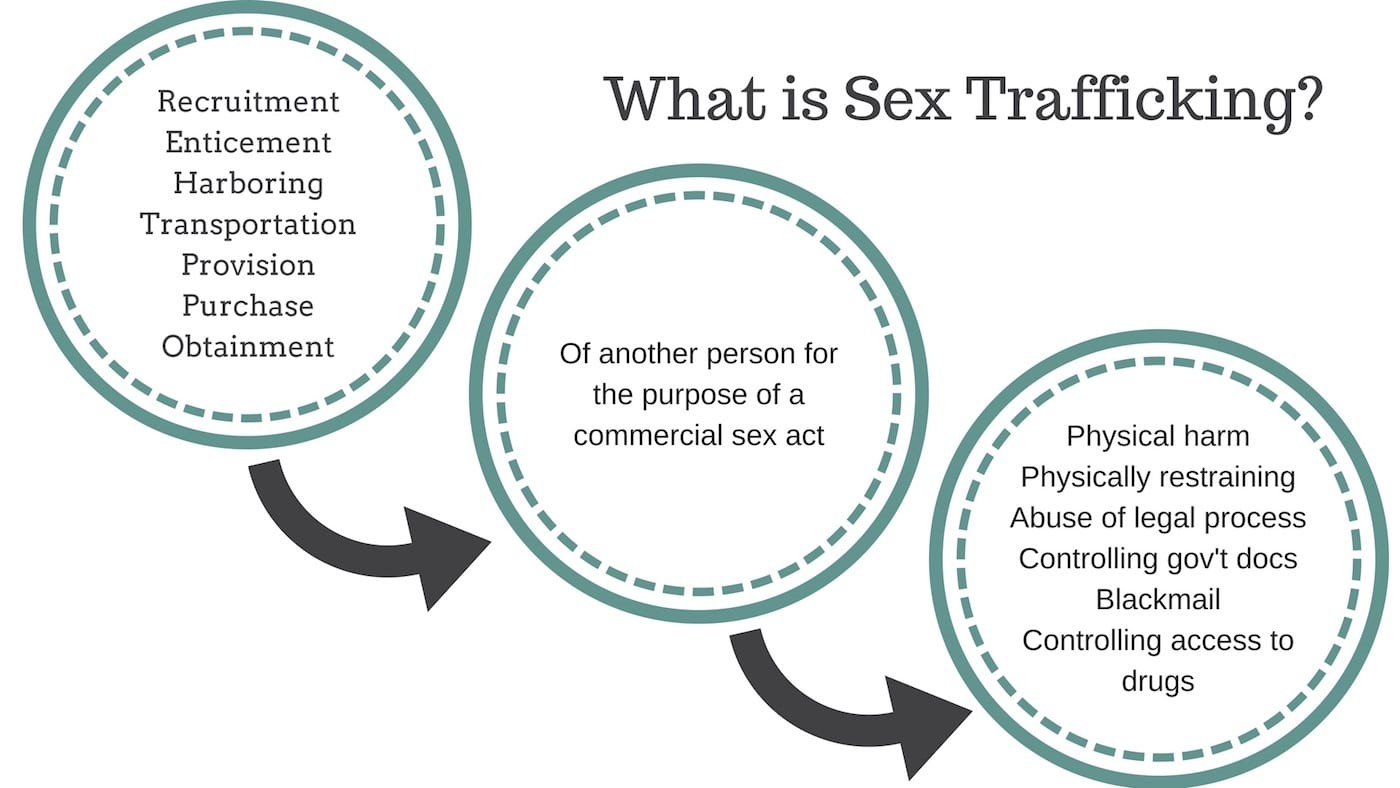
Abolitionists who seek an end to sex trafficking explain the nature of sex trafficking as an economic supply and demand model. In this model, male demand for prostitutes leads to a market of sex work, which, in turn, fosters sex trafficking, the illegal trade and coercion of people into sex work, and pimps and traffickers become ‘distributors’ who supply people to be sexually exploited. The demand for sex trafficking can also be facilitated by some pimps’ and traffickers’ desire for women whom they can exploit as workers because they do not require wages, safe working circumstances, and agency in choosing customers.
One must no exclude male victims of sexual exploitation. Victims of male sexual exploitation are homeless males, out of desperation, many are forced or coerced into sexual exploitation.
Poverty and Globalisation
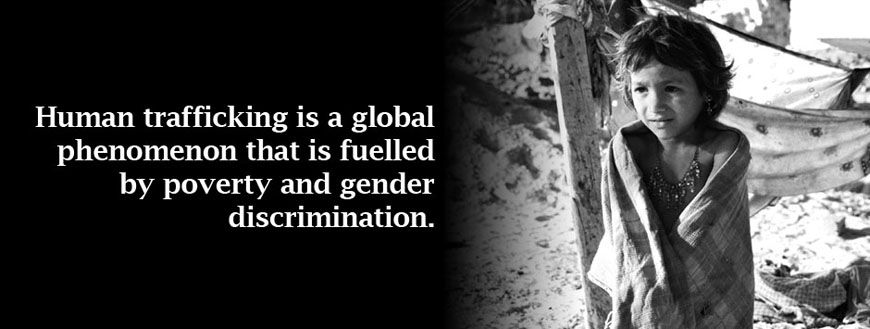
Poverty and lack of educational and economic opportunities in one’s hometown may lead women to voluntarily migrate and then be involuntarily trafficked into sex work. As globalization opened national borders to greater exchange of goods and capital, labour migration also increased. Less wealthy countries have fewer options for liveable wages. The economic impact of globalization pushes people to make conscious decisions to migrate and be vulnerable to trafficking. Gender inequalities that hinder women from participating in the formal sector also push women into informal sectors. Long waiting lists for organs in the United States and Europe created a thriving international black market. Traffickers harvest organs, particularly kidneys, to sell for large profit and often without properly caring for or compensating the victims. Victims often come from poor, rural communities and see few other options than to sell organs illegally. Wealthy countries’ inability to meet organ demand within their own borders perpetuates trafficking. Globalization and the rise of Internet technology has also facilitated sex trafficking. Online classified sites and social networks have been under intense scrutiny for being used by johns and traffickers in facilitating sex trafficking and sex work in general. Traffickers use explicit sites and underground sites to market, recruit, sell, and exploit women. (Facebook, Twitter, and other social networking sites) Studies have identified the Internet as the single biggest facilitator of commercial sex trade, although it is difficult to ascertain which women advertised are sex trafficking victims. Traffickers and pimps use the Internet to recruit minors, since Internet and social networking sites usage have significantly increased especially among children. Organized criminals can generate up to several thousand dollars per day from one trafficked girl, and the Internet has further increased profitability of sex trafficking and child trafficking. With faster access to a wider clientele, more sexual encounters can be scheduled.
Psychological effects on victims
The use of coercion by perpetrators and traffickers involves the use of extreme control. Perpetrators expose the victim to high amounts of psychological stress induced by threats, fear, and physical and emotional violence. Tactics of coercion are reportedly used in three phases of trafficking: recruitment, initiation, and indoctrination. During the initiation phase, traffickers use foot-in-the-door techniques of persuasion to lead their victims into various trafficking industries. This manipulation creates an environment where the victim becomes completely dependent upon the authority of the trafficker. Traffickers take advantage of family dysfunction, homelessness, and history of childhood abuse to psychologically manipulate women and children into the trafficking industry.
One form of psychological coercion particularly common in cases of sex trafficking and forced prostitution is Stockholm Syndrome. Many women entering into the sex trafficking industry are minors whom have already experienced prior sexual abuse. Traffickers take advantage of young girls by luring them into the business through force and coercion, but more often through false promises of love, security, and protection. This form of coercion works to recruit and initiate the victim into the life of a sex worker, while also reinforcing a “trauma bind”, also known as Stockholm syndrome. Stockholm syndrome is a psychological response where the victim becomes attached to his or her perpetrator.
For those enslaved in situations of forced labour, learned helplessness can also manifest itself through the trauma of living as a slave. Reports indicate that captivity for the person and financial gain of their owners adds additional psychological trauma. Victims are often cut off from all forms of social connection, as isolation allows the perpetrator to destroy the victim’s sense of self and increase his or her dependence on the perpetrator.
Human trafficking victims may experience complex trauma as a result of repeated cases of intimate relationship trauma over long periods of time including, but not limited to, sexual abuse, domestic violence, forced prostitution, or gang rape. Complex trauma involves multifaceted conditions of depression, anxiety, self-hatred, dissociation, substance abuse, self-destructive behaviours, medical and somatic concerns, despair, and revictimization.
Children are especially vulnerable to these developmental and psychological consequences of trafficking due to their age. In order to gain complete control of the child, traffickers often destroy physical and mental health of the children through persistent physical and emotional abuse. Victims experience severe trauma on a daily basis. that devastates the healthy development of self-concept, self-worth, biological integrity, and cognitive functioning. Children who grow up in constant environments of exploitation frequently exhibit antisocial behaviour, over-sexualized behaviour, self-harm, aggression, distrust of adults, dissociative disorders, substance abuse, complex trauma, and attention deficit disorders. Stockholm syndrome is also a common problem for girls while they are trafficked, which can hinder them from both trying to escape, and moving forward in psychological recovery programs.
Although 98% of the sex trade is composed of women and girls, there is an effort to gather empirical evidence about the psychological impact of abuse common in sex trafficking upon young boys. Boys often will experience forms of post-traumatic stress disorder, but also additional stressors of social stigma of homosexuality associated with sexual abuse for boys, and externalization of blame, increased anger, and desire for revenge.
Economic Impacts
SEXUALLY TRANSMITTED DISEASES
Victims may develop STDs and HIV/AIDS. Perpetrators frequently use substance abuse as a means to control their victims, which leads to compromised health, self-destructive behaviour, and long-term physical harm. Victims suffer injuries due to torture, where their bodies are broken and beaten into submission
Sex trafficking increases the risk of contracting HIV /AIDS. The HIV/AIDS pandemic can be both a cause and a consequence of sex trafficking. On one hand, child-prostitutes are sought by customers because they are perceived as being less likely to be HIV positive, and this demand leads to child sex trafficking. On the other hand, trafficking leads to the proliferation of HIV, because victims, being vulnerable and often young/inexperienced, cannot protect themselves properly, and get infected.
Identifying trafficking victims
Determining when a child or teen is being targeted by a trafficker can be a challenge. Some red flags include:
- Having a boyfriend or girlfriend who is significantly older.
- Unexplained bruises or attempts to hide bruising or scarring.
- Coached or rehearsed responses to questions.
- Uncharacteristically promiscuous behaviour or unexpected references to sexual situations.
- A sudden change in personal hygiene, relationships, or clothing choices.
- Frequently running away from home, or unexplained absences from home or school.
- Comes home with expensive gifts (cell phone, electronics) or money
Parents, teachers, and interested adults need to be aware of possible signs of trafficking and should step in to determine if a child or teen may be the target of someone involved in the sex trafficking trade. Victims need full protection under the law, and there are resources and organizations set up to protect trafficking victims and help them to rebuild their lives.
As a school staff member, you must act as soon as you witness an incident or form a reasonable belief that a child has been or is at risk of being abused, including exposure to family violence.
You must act if you form a suspicion/reasonable belief that abuse has occurred or is at risk of occurring, even if you are unsure and have not directly observed child abuse (e.g., if the victim or another person tells you about the abuse).
You should make sufficient enquiries to form a reasonable belief and to determine a child’s immediate needs. However, once a reasonable belief has been formed, it is not your role to investigate. This is the role of DHHS Child Protection or Victoria Police.
Child abuse includes any instance of physical or sexual abuse (including grooming), emotional or psychological harm, serious or significant neglect and family violence involving a child. If you hold significant concerns for a child’s wellbeing which do not appear to be a result of child abuse you must still act by reporting the matter to the local authorities.

